
‘SINCE WILLIAM ROSE AND HAROLD FELL, THERE HAVE BEEN EARLS AT ARUNDEL’
[caption id="ArundelBritainsFinestCountryTown_Feature" align="aligncenter" width="1024"]
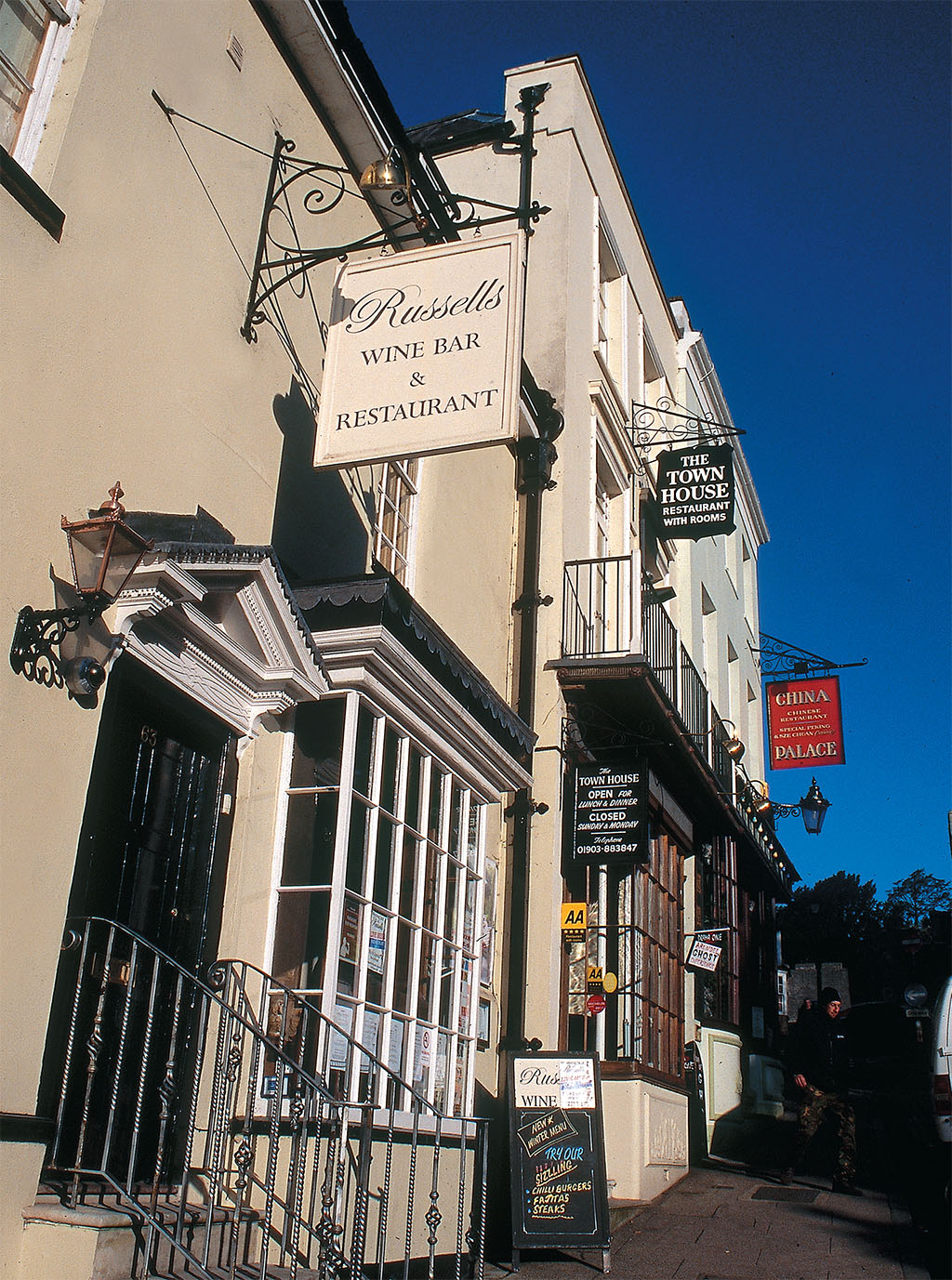
DANA HUNTELY
An iconic, historic centerpiece like a castle or an abbey; a dramatic and scenic setting; a High Street of quaint, individual shops instead of dominating chain stores; an active and varied civic life: When the Daily Telegraph commissioned a panel this year to find the top 50 country towns—the best places to live in Britain—members used these criteria to compile the list. And, lo, as the anticipated results were announced, at the top of the table was Arundel, West Sussex.
[caption id="ArundelBritainsFinestCountryTown_img1" align="alignleft" width="878"]
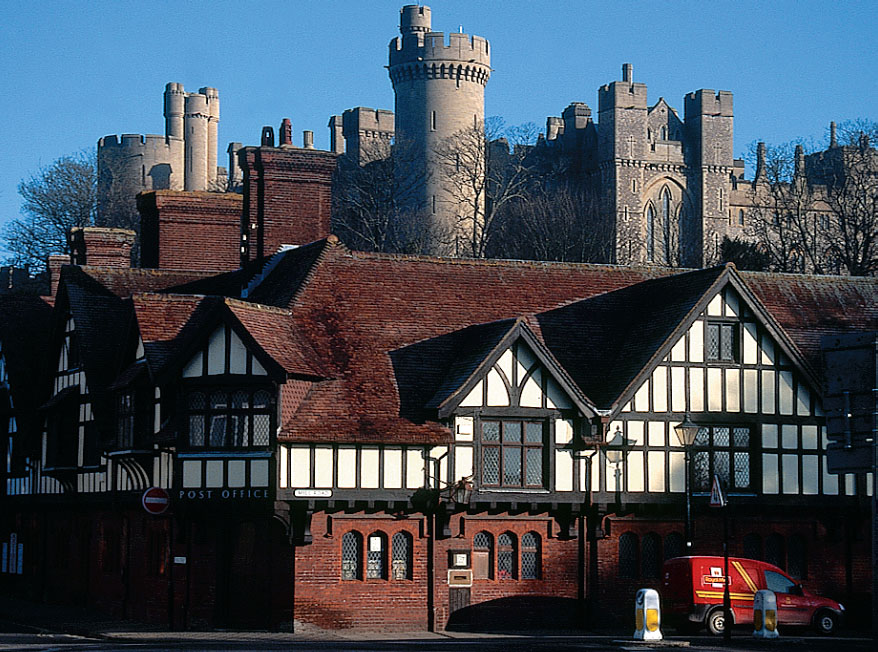
DANA HUNTELY
Arundel—the dell of the River Arun—was really built on a hill, spilling down from the commanding castle on its brow. Roger de Montgomery, the first earl and one of William the Conqueror’s loyal lieutenants, started the original castle in 1067. He got a third of Sussex in exchange for building the fortress that would defend its approaches from the sea. As for so many medieval towns, it is the formidable and majestic castle that draws throngs of visitors to its center year after year.
But is Arundel really the best place to live in Britain? Ah, I thought, inquiring British Heritage readers might like to know.
Arundel is a small town, with a stable population of about 3,000. Its pretty High Street tumbles down the hill from the castle, ending at the River Arun and broad wet meadows stretching beyond. There is an assortment of antique shops and restaurants—even a shop specializing in walking sticks—and the venerable Norfolk Arms hotel with its arched entrance for stagecoaches. Kim’s Bookstore crams 25,000 second-hand and antiquarian volumes higgledypiggledy into three narrow floors. I’ll bet they haven’t counted recently.
At the bottom of the High Street, the ruins of a Dominican priory sit beside the River Arun, next to a riverside tea garden and the Arundel Boatyard, where visitors can take cruises on the water or hire motorboats for cruising the river themselves. That might take some care; the Arun is tidal and reckoned the second-fastest flowing river in England.
I munched on a warm Stilton and bacon baguette with a cup of tea at the Moathouse Café while charting a plan to learn the town. Over the lintel next door was a worn but legible inscription:
“Old Harry’s nephew
works here
Repairs boots and shoes,
is not dear.
His leather is good,
his work is quick,
His profits small,
but he gives no tick.”
OF COURSE, THE PLACE to start is that castle.
Arundel Castle is the home of the Duke of Norfolk, senior peer of England and Earl Marshal of the kingdom. That first earl’s descendents have lived in the castle for some 900 years. The keep is the oldest part; that’s where work began in 1067. The castle’s strategic location allowed command of the River Arun valley and the southern escarpment of the Downs. From the battlements, gorgeous views stretch over the valley along the river toward Littlehampton.
Today, the keep is kept in display state, showing what life here was like around 1190. Even for the earl and his family, it really wouldn’t have been comfortable. But like every other aspect of life, the castle didn’t stay the same. By the late 1800s, the house had been almost completely rebuilt in magnificent Gothic style—one of the great architectural triumphs of Victorian England. After Windsor Castle, I’m told, it is the second-largest inhabited proper castle in the land.
The Long Gallery, leading east from the Great Hall past a variety of state rooms and bedrooms, contains portraits of all the Dukes of Norfolk—from the first to the 17th.
Among the relics and displays in the state dining room is the gold and enamel rosary that Mary, Queen of Scots, carried to her execution at Fotheringay Castle in 1587. It was bequeathed by her to Anne, Countess of Arundel. The mammoth dining table is set for dessert as it was for Queen Victoria’s 1846 visit.
The adjacent small drawing room, called the Canaletto Room because it has three Canaletto paintings on the walls, has furniture retrieved from now-demolished Norfolk House in London. Van Dykes and Gainsboroughs hang around elsewhere. The more informal larger drawing room next door is full of family photos and autographed pictures from an assortment of past and present Royal Family members and various popes.
[caption id="ArundelBritainsFinestCountryTown_img2" align="aligncenter" width="477"]
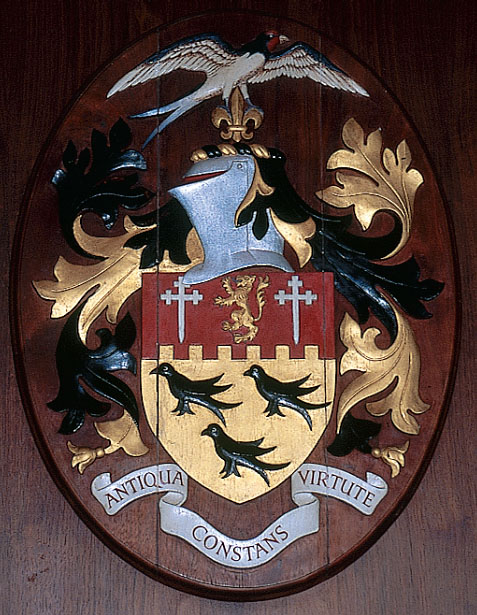
DANA HUNTELY
As the senior peerage, the Norfolks, surnamed Howard, have long been the ranking Roman Catholic family in Britain. Their religious devotion is evident not only in the castle, but also in Arundel’s other dominant building, the Cathedral of Our Lady and St. Philip Howard, just up the street.
Henry, 15th Duke of Norfolk and Earl Marshal, commissioned its construction in 1869 to celebrate the 1850 revival of English Catholicism. It was built of Bath stone in the French Gothic style of the 1400s. Its dedication saint, the 13th Earl of Arundel, Philip Howard, died in the Tower of London in 1595 and was among the 40 martyrs of England and Wales canonized by Pope Paul VI in 1970. Though the cathedral is relatively small, seating only 500, its commanding position on the ridge overlooking the town center joins the castle in dominating the skyline, visible for miles across the southern river valley.
‘EVERYONE ENTHUSIASTICALLY AGREED ARUNDEL IS A GREAT PLACE TO LIVE’
The nearby Church of England parish church, St. Nicholas, was actually built in the 14th century. In one of the strangest church building arrangements going, the western end of the edifice is the C of E church; it is divided from the Fitzalan Chapel by a grill and plexiglass partition, discreetly screened off behind the altar. The chapel is a consecrated place of Catholic worship and traditional burial place of the Dukes of Norfolk, and is accessible only from the walled castle grounds.
[caption id="ArundelBritainsFinestCountryTown_img3" align="aligncenter" width="1024"]
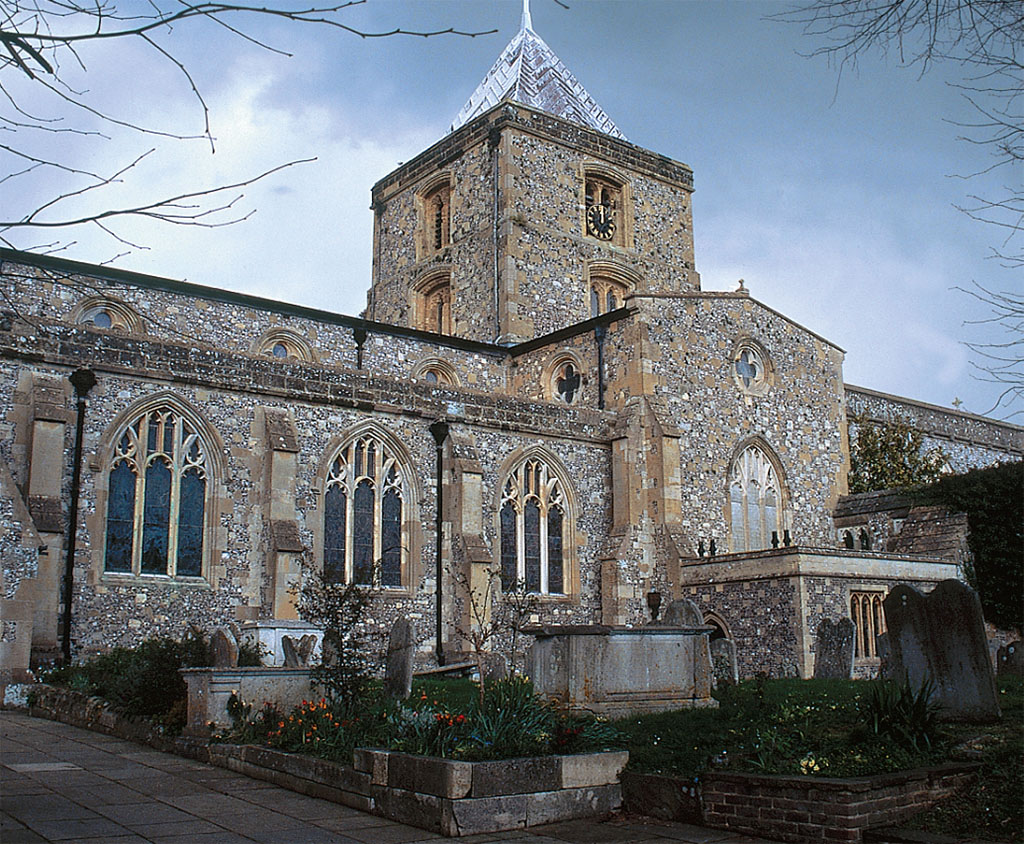
DANA HUNTELY
WELL OFF THE HIGH Street, long after the daytrippers had carried on, I found the locals’ local, the King’s Arms Freehouse on Tarrant Street. “This is a right proper boozer,” I was assured by George Bridge, who waved me to the stool next to him. “There’s no food here. This is a place to come for a pint and a visit with your mates.”
A sign in every window declared: “To all my customers. Due to this Government’s total disregard for freedom of choice and their kowtowing to any group they feel to be popular, this is now a non-smoking establishment.”
Many of the regulars are Arundel natives, who have been frequenting the King’s Arms for years. They were all too willing to sing the town’s praises and tell stories of its history. “There used to be 42 pubs in town, when Arundel was a port with a custom house and sailors from around the world,” Bridge regaled. “The river silted up a long time ago, though, and the ships got bigger. That’s all gone now.”
As folks drifted off to dinner, so did I.
To the delight of Arundel’s residents, and undoubtedly its visitors as well, the town boasts a genuinely impressive range of eating establishments—Chinese, Italian, French and upscale contemporary British cuisine. I sampled the India Gate on Mill Street for sheekkebab, tiger prawn puri and gobi aloo. It was great. Had I wanted something more esoteric, I could have tried the ostrich tikka.
The next morning I went back to the Moathouse Café for the cheapest breakfast in town. After the old egg and beans, it was time for a significant stroll. Neatly planted double columns of trees flank Mill Road, which leads past a popular putting green, tennis courts and the manicured lawns of the Arundel Bowling Club toward Swanbourne Lake. At the rather modest lake, you can rent rowboats, take tea in the lodge or grab an ice cream to fortify you for a climb up well-used paths into 1,000 acres of castle parkland.
Planning a visit to Arundel
Visiting Arundel is easy. By car, the town is a couple of hours drive south of London; by train from Victoria Station, half that. In fact, you can take the train directly from London Gatwick to Arundel. There is a range of accommodation, from the three-star Norfolk Arms on the High Street (www.norfolkarmshotel.com) to more modest B&Bs. The helpful Visitor Information Centre is open daily throughout the year. You can access them at www.sussexbythesea.com or e-mail them at [email protected].
[caption id="ArundelBritainsFinestCountryTown_img4" align="alignright" width="435"]
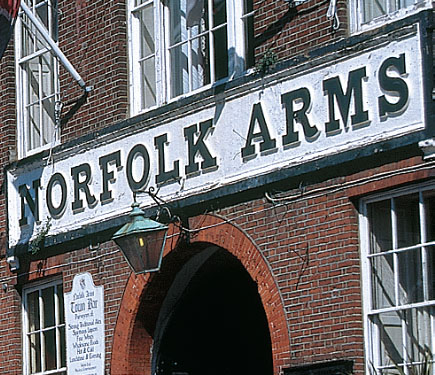
DANA HUNTELY
[caption id="ArundelBritainsFinestCountryTown_img5" align="aligncenter" width="1024"]
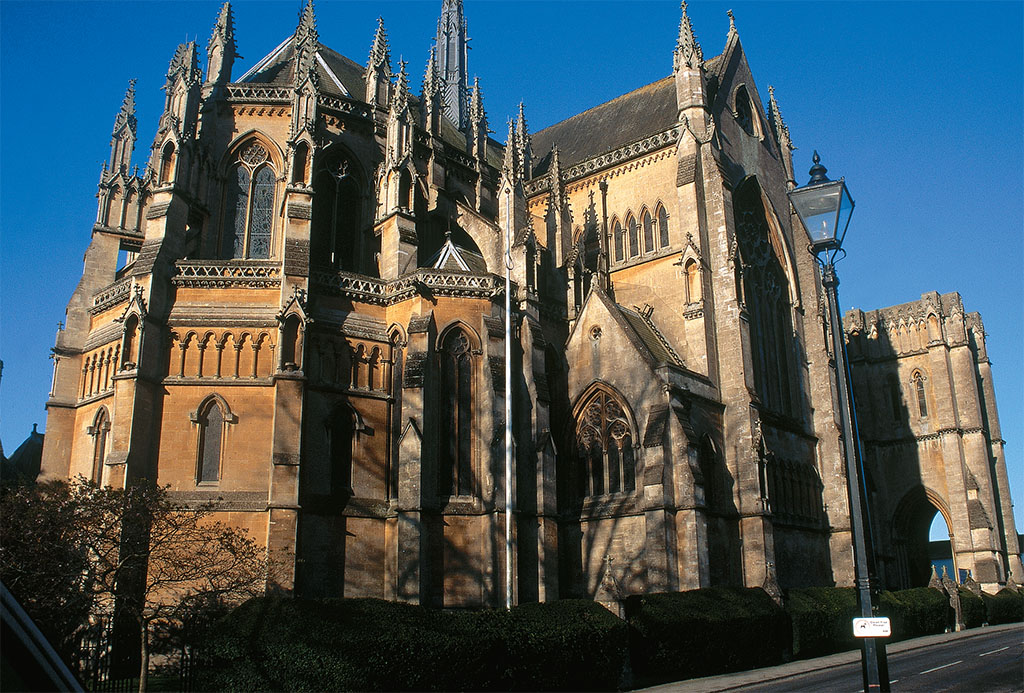
DANA HUNTELY
Around the bend, the Arundel Wildfowl and Wetlands Trust lies astride the river. Peter Scott founded the Trust in 1946, and there are nine such Trust preserves across the UK. Scott, son of explorer Robert Falcon Scott, was one of the most important conservationists of the 20th century. Among other accomplishments, he was the founder and first chairman of the World Wildlife Fund. The wildfowl and wetland center here opened in 1976. Red-necked geese and nenes are among the rarer inhabitants.
Back in town, at Pallant Wines and Delicatessen, I picked up a bacon, brie and salad sandwich and a cup of leek and asparagus soup for lunch in the sunshine on a bench outside the castle gates.
AT THE VISITOR Information Centre, Sylvana Cottell didn’t hesitate to share Arundel’s charms. “As a resident of the town what you would find is that there is a terrific sort of camaraderie between everybody and when you’ve been here a little while you find you get to know so many people,” she said. “It’s like a little village, but within a town center. There are those who are very into the town history, and we have a very strong theatrical tradition. Those who live here tend to really like that sort of thing. The river and its wetlands have protected us from the sort of new housing estates built around up in Pulborough.”
Back at the King’s Arms that evening, I visited with half a dozen friendly folk, including the mayor’s Sergeant-at-Arms, Tony Taylor- Mason, a big easygoing bloke with a full white beard. “When there are civic ceremonies, my job is to make sure that everything runs smoothly,” he laughed, “which is the same function the Earl Marshal performs—on a little smaller scale.”
Taylor-Mason is pretty handy for the job, describing himself as the “keeper” of the Town Hall. The ancient privileges of Arundel’s mayor and burgesses were confirmed by Queen Elizabeth in 1586, but he explained why the building itself was rather more recent: “The town council used to meet in the old Priory, what’s now the community playhouse. But the Town Hall was built in 1936, when the Duke built it for the town so he could complete the curtain wall up along the top of the High Street.” Built that recently, it nonetheless has the only known working gas chandelier left in the country.
It’s true; everyone loves Arundel and is proud of it. “We live longer here than in any other part of the country, and we use the fewest resources of the National Health Service,” Taylor-Mason chimed. Though these Arundel residents do stay in town, they worry about the next generation. “Young people starting out can’t find places in town, or they’re too expensive. So, they’re moving on to Littlehampton or Worthing.” And from what I saw in the estate agents’ windows, real estate prices reflect Arundel’s desirability—£ 380,000 to £450,000 for a three-bedroom house.
At a brasserie called The Muse, I supped on artichoke hearts wrapped in pancetta and grilled with gruyere, and a tender bacon chop on cheddar mash with cider sauce and buttered leeks.
Whether Arundel really is the best place to live in Britain, of course, is a pretty subjective question. Everyone I talked to, however, enthusiastically agreed it is indeed a great place to live. For certain, Arundel is a varied and wonderful town to visit, and to linger a while. The Arundel Choral Society’s spring concert, featuring works by Handel and Elgar, was the next week.
Lucky residents of Arundel.





Comments